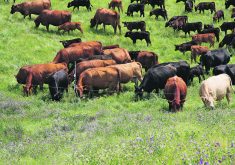Prairies needs pasture rental information
It’s pasture rental time of year again, and as usual there is a complete dearth of market information available outside of Alberta.
Scanning available social media, Facebook — and I realize that the Trudeau ban on news is problematic for The Western Producer— has an Alberta group — somewhat predictably called Alberta Pasture for rent— populated with 7,200 members listing pasture rates ranging from the ridiculous $1 per cow-calf per day published by Sask Ag to an equally unrealistic $4.95 by a hopeful pasture owner near Moose Jaw.
Read Also

Kochia has become a significant problem for Prairie farmers
As you travel through southern Saskatchewan and Alberta, particularly in areas challenged by dry growing conditions, the magnitude of the kochia problem is easy to see.
The admin for an equivalent Saskatchewan FB group (equally imaginatively called Saskatchewan Pasture for rent) boasting 1,300 members, will not even permit cross-posting from the Alberta group, and doesn’t list any rates.
Another Saskatchewan group called 306 Pasture Rentals has an astonishing 143 members of which an entire one is posting anything, including an ad on Kijiji that attracted 783 views during its listing period. Manitoba doesn’t even bother.
With Saskatchewan ex-pats divesting from investment-hostile B.C. to reclaim their connection to Saskatchewan by paying $1,000 plus per acre for otherwise almost worthless non-arable native pasture, replacing 60-year-old fence at something like $8,500 per mile and establishing summer base camps buying — and paying taxes on — equally worthless abandoned village properties, it would seem hospitable to welcome them home by at least publishing some market intel.
The ex-pats have become the new settlers, and the $150 per head feed subsidy can make pasture look mighty attractive for investment if the cattlemen would share the wealth and the locals would share the knowledge.
As a fourth gen stubble jumper fitting the above description returning to connect the fifth generation to their 1895 roots, it irritates me to be treated like a newly arrived townie with no clue of the market value of my investment. I’ll let it sit fallow first.
Terrance Martin,
Sooke, B.C.
NFU works to support agricultural producers
As Robert Arnason’s recent article on page 15 of the April 25 issue highlighted, the National Farmers Union is highly engaged in promoting public policy positions that benefit farmers. Our members’ knowledge is grounded in their own farming experience along with astute and insightful analysis of how federal and provincial policy affects themselves and their neighbours.
The NFU benefits from having a diverse membership. This is reflected in the make-up of our board, which does, in fact, include commercial grain farmers, as well as cattle and other livestock producers and commercial vegetable growers.
The NFU’s diversity encompasses many dimensions of today’s farming scene and is a strength that contributes to our advocacy work.
As far as lobbying activities go, as our president stated, the NFU is addressing recent changes to the interpretation of lobbying registry regulations in order to remain in compliance.
And as Arnason noted, the NFU website and social media are great places to learn more about how NFU members democratically advocate for policy that matters to farmers.
Will Robbins,
Laura, Sask.
NFU Region 6 board member
















